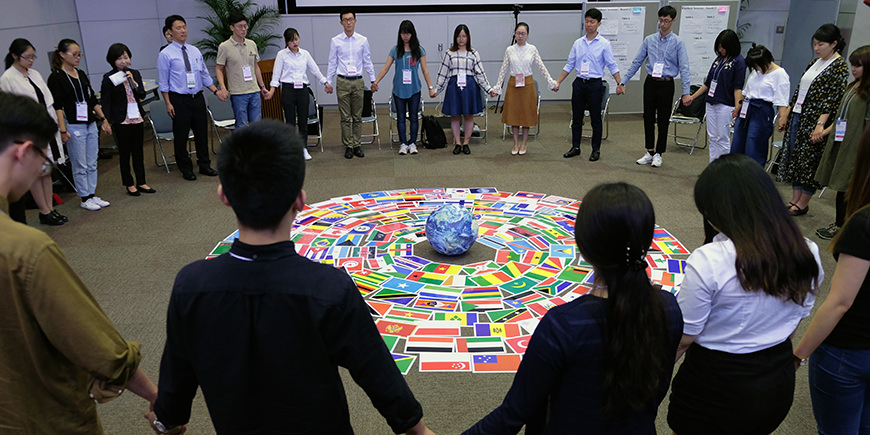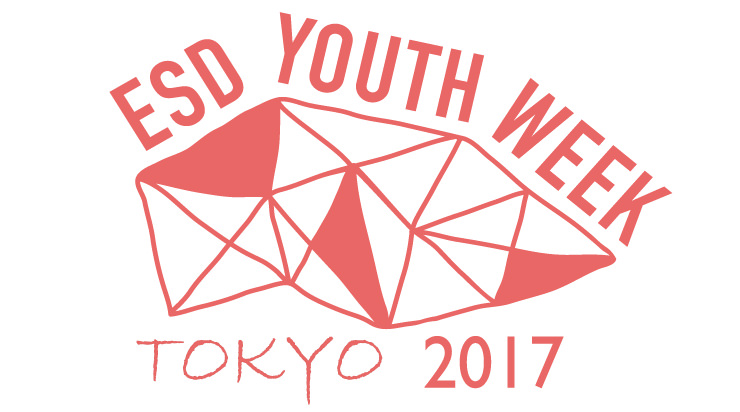
As part of the ongoing initiative to empower and mobilize youth to advance Education for Sustainable Development (ESD), the Goi Peace Foundation organized an ESD Youth Week in Tokyo in September 2017, in partnership with the Ministry of Education, Culture, Sports, Science and Technology of Japan (MEXT) and the Japanese National Commission for UNESCO.
The ESD Youth Week started with the 4th ESD Japan Youth Conference from 23-24 September 2017, bringing together 54 ESD youth leaders (18-35 years old) from across Japan. This was followed by the China-Japan-Korea Youth Exchange Program from September 24-26, where 30 university students from the three countries were invited to discuss the theme of ESD.
The 4th ESD Japan Youth Conference, 23-24 September 2017
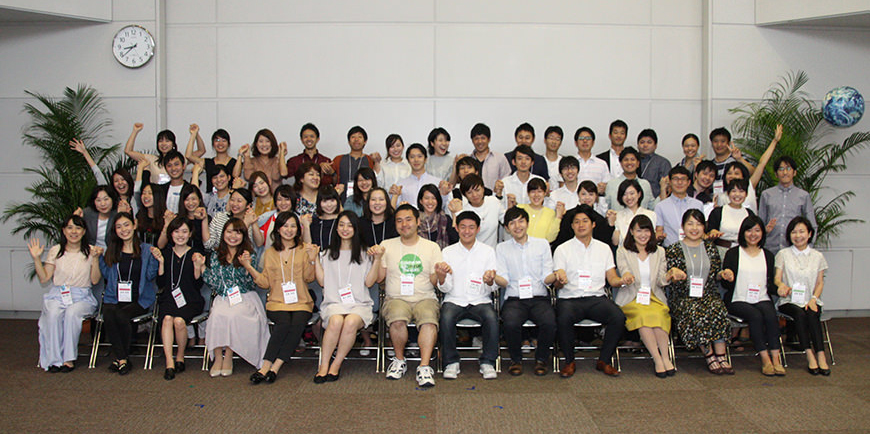
Since 2014, the ESD Japan Youth Conference has been organized annually to offer students and young professionals from various fields a platform to come together and engage in dialogue and peer learning to enhance their ESD practices. The Conference has catalyzed many collaborations and innovations in the past, and the 4th ESD Japan Youth Conference was held to build on this ongoing youth-led platform.
Opening plenary
In her opening remarks, Masami Miyazaki, Executive Director of the Goi Peace Foundation, welcomed the participants and explained the significance of the role of youth in creating this conference. For this year’s conference, six participants from previous years joined the program design team from the preparatory stages and took part in the conference as mentors to help create a safe space for open dialogue among the participants.
A keynote speech was delivered by Noriko Suzuki, Assistant Director-General for International Affairs, MEXT. Ms. Suzuki gave an overview of the national and international activities to promote ESD, and described how ESD contributed to the attainment of UN SDGs (Sustainable Development Goals). She expressed her high expectations for the youth in promoting ESD among a broad range of learning communities with their free thinking, mobility, networking and innovative approaches.
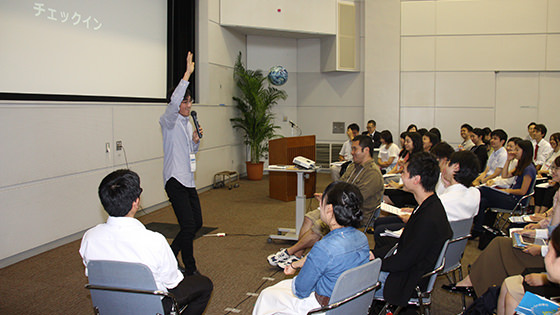
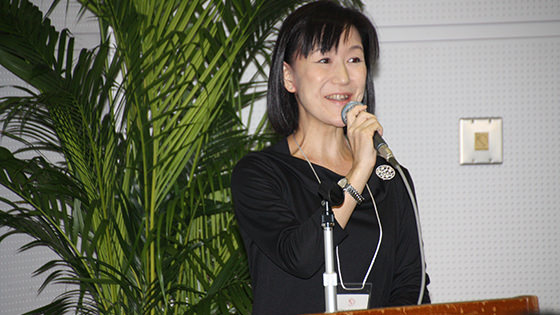
Creating deep connection and learning from one another
After some lively ‘icebreaking’ activities, participants formed groups and shared personal stories of how they developed their passion for the sustainability work they are currently involved in. To practice deep listening, they listened to the stories of their peers through different perspectives, or ‘lenses’. The three lenses, along with some of the harvests of this session, were as follows:
- What kind of leadership is needed in the future? Independent thinking while honoring diverse opinions; trusting and harnessing others; motivation and action
- What are the important elements for future education? Enhancing self-image; learning through dialogue; accepting the unknown; being a role model
- What are important elements for running projects or organizations? Finding supporters that share your passion; respecting different values; offering different ways to get involved; good communication between management and the field
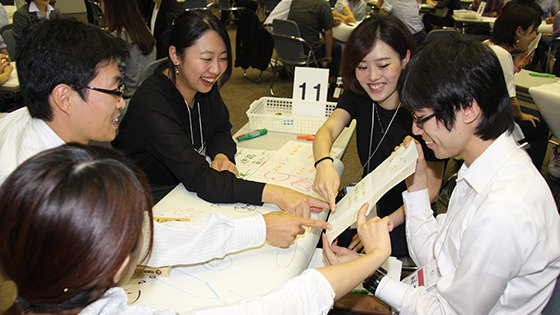
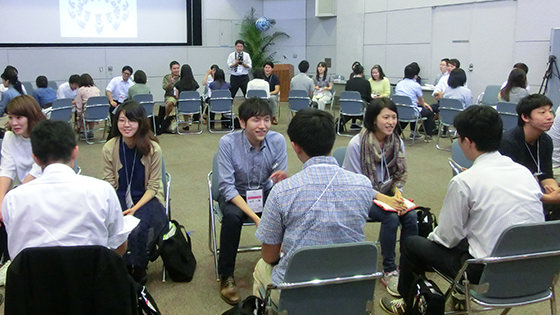
The next program was a breakout session for peer learning. Eight participants volunteered to offer their workshop or host a round-table talk, and other participants joined the session of their choice.
- Translating your passion into action for change
- Introducing your activities into schools
- Finding your driving question
- How can we take ownership of social issues?
- How would you explain the SDGs to your family and friends?
- Becoming an advocate for children’s rights
- Why ESD? – Using body movements to express its importance
- Planning a SDGs workshop
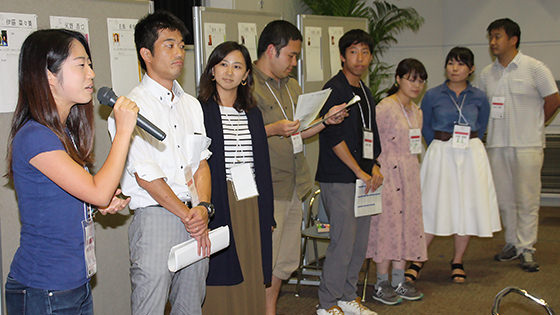
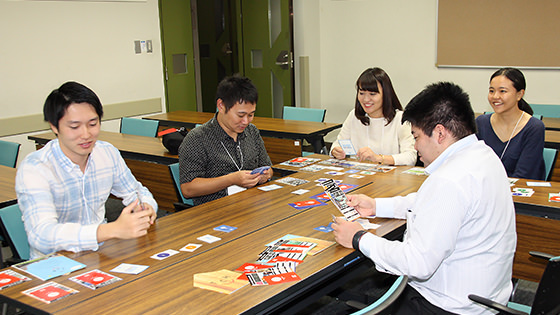
Creating a scenario to move forward
Day 2 began in a relaxed World Café setting, in which participants discussed the “mission of youth in building a sustainable society.” They explored this big topic through three progressive questions: “What was the inspiration gained from Day 1?” “What possibilities does youth hold?” and “What kind of change do I want to make?”
In the next visioning session, participants articulated the future they wished to create by unfolding their full potential. Each participant added their specific vision to a matrix depicting the future of oneself, community, nation, world, lifestyle, systems, and education in 2020 and 2030 respectively, and eventually formed a collective vision, which included descriptions like “student-centered education,” “zero-terrorism,” “mainstreaming alternative energy,” and “everyone empowered to be a changemaker.”
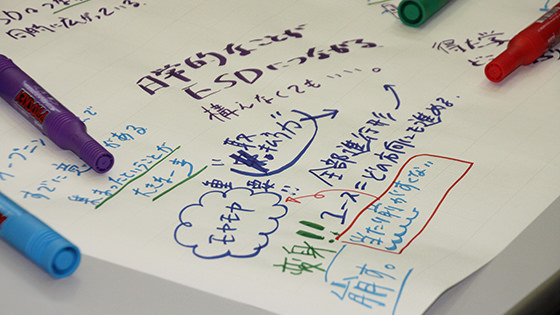
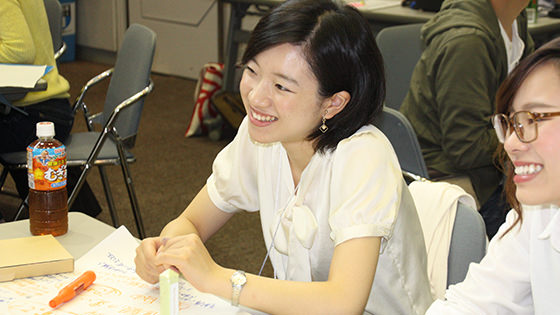
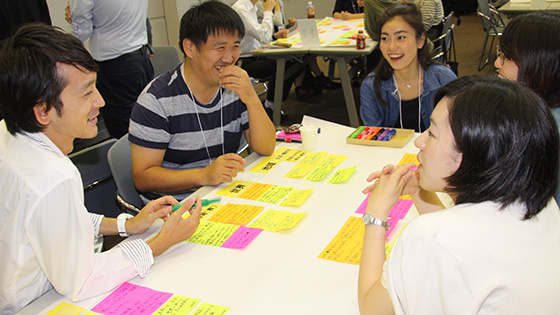
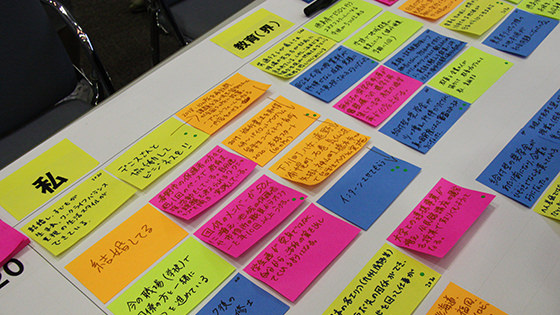
After some quiet time spent meditating on the ideas discussed, the final session was dedicated to action planning. Participants were invited to present existing projects that they wished to accelerate or ideas for new projects. Fourteen participants presented their projects, and others offered advice or pledged support according to their interests or expertise. By the end of the session, the presenters had come up with lots of ideas for next steps, while the rest of the participants likewise gained inspirations for their own future activities.
- Creating opportunities to learn from ESD practitioners
- Passing on experiences of war
- Community building from a local perspective
- Developing ESD workshops using music and dance
- Creating projects that combine climate change with other issues
- Developing a new program for career development of high school and university students
- Making money through collaborative community building projects
- Connecting community and schools to enhance learning opportunities for children
- Unfolding the potential of learners regardless of their background
- Organizing a 6-month program for a multi-stakeholder ESD conference
- Designing graded curriculum for ESD classes
- Organizing a citizenship workshop on anger and structural violence
- Designing ESD events with high school students
- Exploring worldviews
At the end of the conference, all the participants gathered in a large circle and shared their final thoughts and personal commitments. All in all, everyone seemed to have found a good deal of inspiration, ideas, support and collaborators to advance their ESD work, and a strong sense of community was built among the group. A follow-up meeting to present progress on the action plans is scheduled to take place in Tokyo on 17 February 2018.
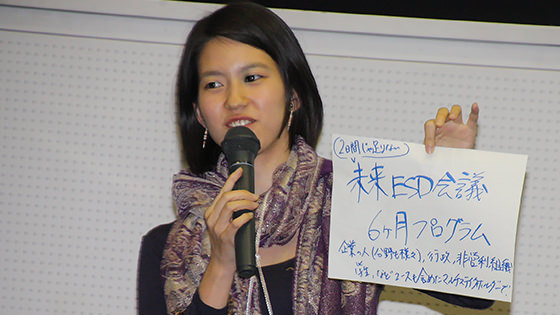
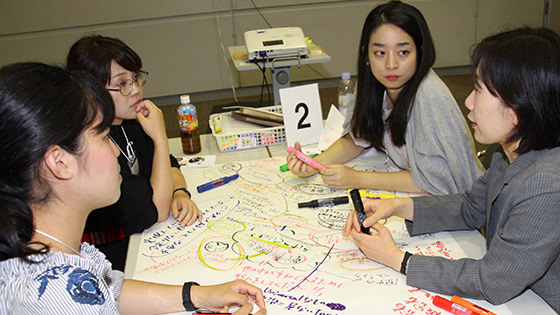
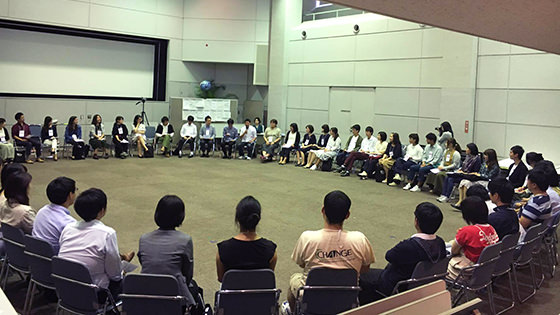
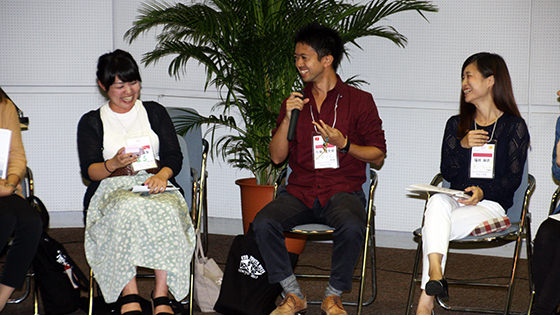
China-Japan-Korea Youth Exchange Program, 24-26 September 2017
In the latter half of the ESD Youth Week, the China-Japan-Korea Youth Exchange Program brought together ten young leaders from each of the three countries under the theme of ESD. Initiated at the Trilateral Education Ministers’ Meeting held in Seoul in 2016, the youth exchange program offered an opportunity for the participants to co-create a vision for a peaceful and sustainable future, while deepening mutual understanding through dialogue, peer learning and exchanges.
Welcome dinner and opening plenary
On 24 September, university students from China and Korea arrived in Tokyo and were received warmly at a welcome dinner by the Japanese youth, who had just wrapped up the ESD Japan Youth Conference.
The official two-day program started the next morning, with opening remarks by government officials―Ms. Satomi Tomoka, Director of International Affairs Division, Minister’s Secretariat, MEXT-Japan; Ms. Whang Sojeong, Deputy Director of International Education Cooperation Division, Ministry of Education in Korea; Mr. Hu Zhiping, Minister Counsellor, Embassy of the People’s Republic of China; and Mr. Yamamoto Yasushi, Deputy Secretary-General, Trilateral Cooperation Secretariat―who each expressed their high expectations for the youth to build lasting bonds and to work together as future leaders to address common issues.
Following some ‘icebreaking’ activities to get to know each other, participants had a chance to establish common ground through the keynote lecture, “Introduction to ESD and SDGs―Why education matters for a sustainable future,” offered by Prof. Nagata Yoshiyuki of University of the Sacred Heart.
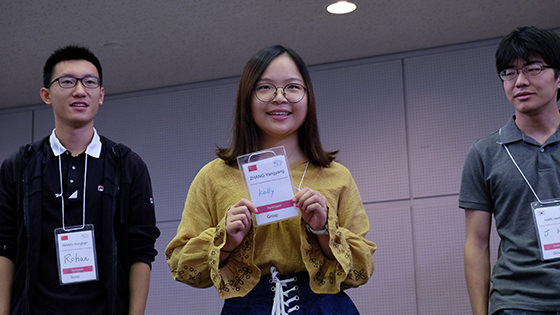
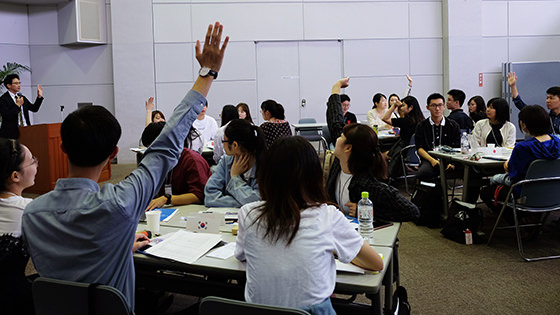
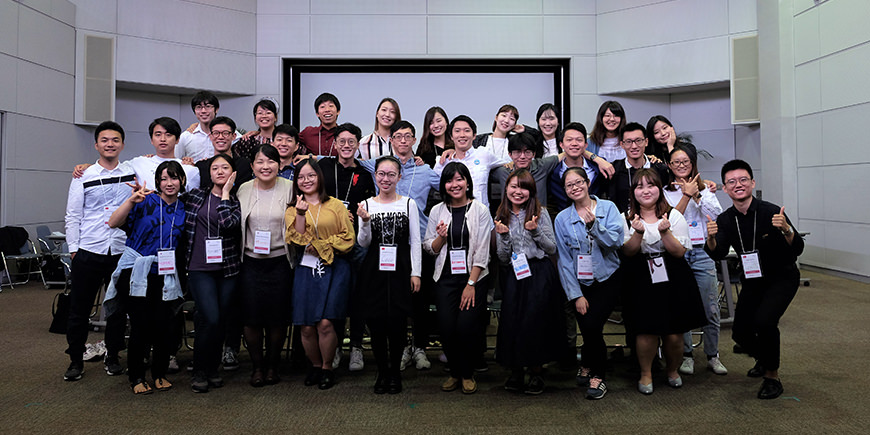
ESD field trip
In the afternoon, participants formed five groups and visited different places in Tokyo that take a unique approach to ESD. During their visit, they reflected on such questions as how the educational activity differed from practices in their country or community, and what learning they can take away to enhance their own practice.
The field trip programs were as follows:
Science education and communication
Innovative model of inclusive education
Community currency system developed by Waseda University and local shopping district
International cooperation and educational activities in Japan
SDGs card game
Having strengthened their teamwork through the field trips, the respective groups spent the evening session going deeper into each member’s personal stories by sharing life events, passion and challenges.
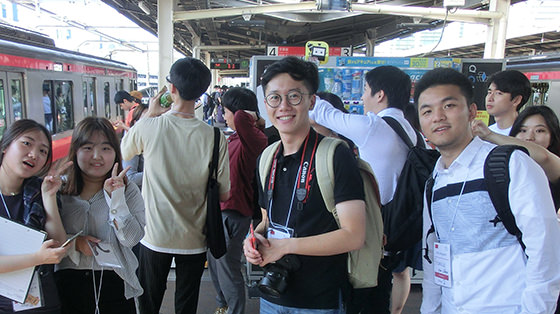
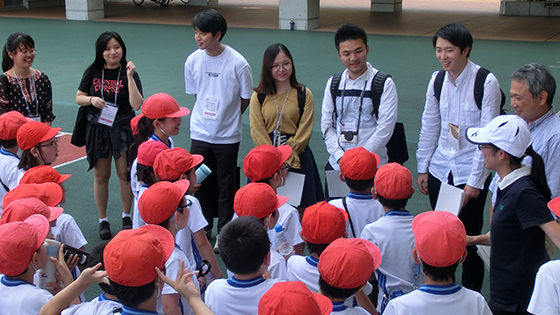
Co-creating a vision for East Asia and the world
In the first session on Day 2, participants were challenged to use storytelling to imagine a new future that is not an extension of the present. They were first asked to write down one keyword that best described their desired future. Words such as ‘equality,’ ‘health,’ ‘technology,’ ‘cooperation,’ ‘connectivity,’ ‘borderless,’ and ‘integration’ were among the many positive words collected. Then, in groups, participants used the keywords to create a story of a new future for East Asia and the world, and presented these stories through role playing, drawings, and other unique expressions. The room was filled with awe and laughter as each group played out their vision, such as the creation of an Asian Union, a borderless East Asia in which current nations were like provinces, overcoming language barriers with each other and even with animals through the use of automated translation, and other futuristic ideas.
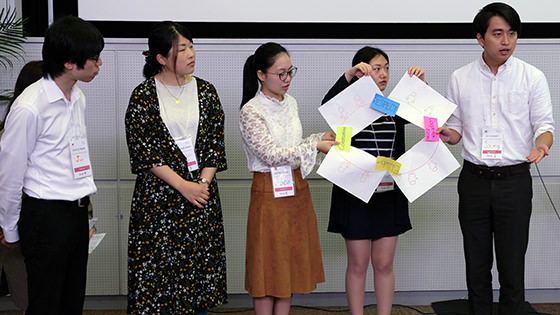
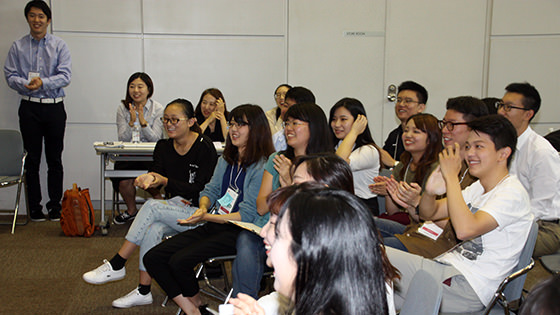
Empowering each other as change agents for sustainable development
In the next session, participants discussed what they can actually do in order to realize the vision they created. They took the initiative in organizing breakout sessions by proposing specific topics they would like to explore or projects they wish to start.
The 12 breakout session slots were quickly filled by proposals with discussion topics such as “Building an online platform to continue discussions to deepen mutual understanding,” “Urban planning in Asia,” “How to overcome ageism in Asian countries,” and “How to connect people to global issues, removing ignorance and indifference.” All participants actively engaged in the discussion of their choice, enriching their learning through the different perspectives and experiences of their peers.
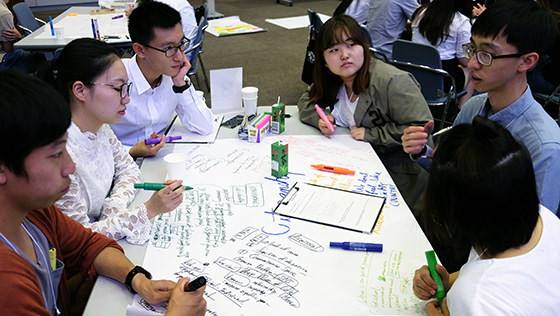
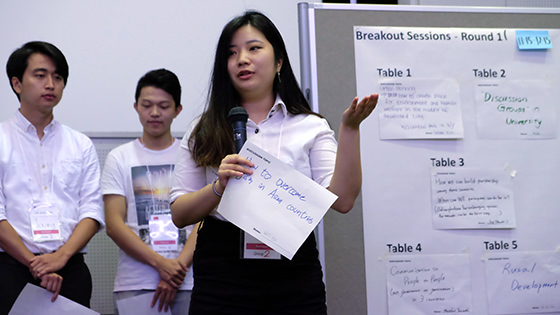
Closing ceremony
Finally, everyone took part in a World Peace Flag Ceremony to celebrate the oneness and diversity of the global family and all life on earth. They affirmed the universal wish for peace that lies at the core of every human heart, and gave expression to it by offering their wish for peace to prevail in each country of the world.
After the official closing, participants were offered a taste of Japanese culture with a koto performance and workshop. The experiences shared and the friendships fostered through this program will no doubt have a positive influence on participants’ future activities and on cooperative relations among the three countries.
